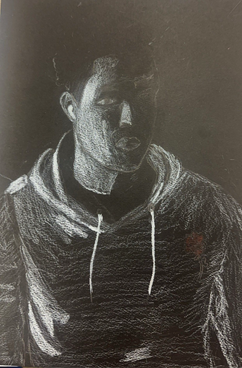PORTRAITS
Portraiture holds a distinctive position in art history. Examining the subjects and techniques used in portraits allows us to gain profound insights into social, cultural, and political contexts, unmatched by other forms of painting. Its origins can be traced back to ancient times, where it served various purposes such as glorifying the powerful and commemorating the deceased. However, it was during the Renaissance that portraiture truly flourished, gaining significant importance. The 17th Century further solidified its status when the French Royal Academy established a hierarchy of art genres, ranking portraiture second only to history painting. Contemporary portraiture continues to evolve, with artists exploring new methods and styles to create compelling and unique portraits. It remains a dynamic art form that both captivates and inspires artists and audiences alike.The art and photography classes have been delving into portraiture as well. In Art I, students learned about the fundamental proportions of the human head and practiced creating self-portraits from practicing from a mirror to taking photographs of each other, focusing on value and observation.Photo I students delved into portraiture with an emphasis on dramatic lighting. For these students it was their first experience with a film camera. They honed their skills in using studio lighting to narrate stories through portraits. They also gained insights into technical aspects like shutter speed, aperture, film development, and printing using an enlarger.Photo 2 students explored portrait manipulation in Photoshop. Starting with colored lights and a DSLR camera students took photos that they then manipulated in Photoshop, playing with light movement and double images.
Heading 3
























